Explore these 25 moss garden ideas that bring a refreshing touch to your outdoor space. From enchanting moss paths to tranquil moss beds, these creative inspirations will help you incorporate moss into your gardening projects in unique and stylish ways. Get ready to embrace the beauty and simplicity that moss can offer!
Moss-Covered Garden Statues
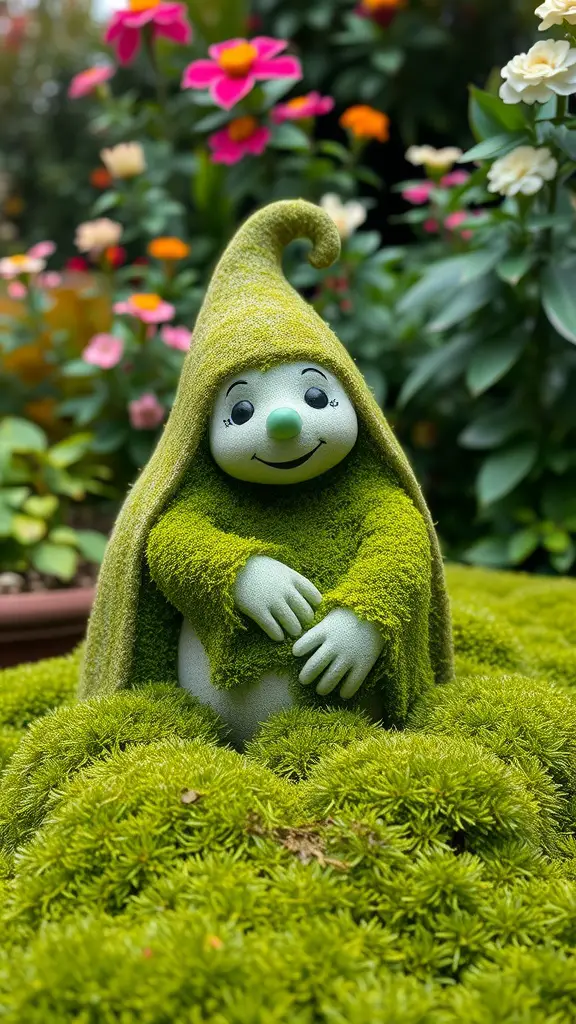
Moss-covered garden statues bring a unique charm to outdoor spaces. This whimsical statue, draped in soft green moss, adds a playful touch to any garden. The smiling face and inviting pose create a sense of friendliness that draws attention.
Surrounded by colorful flowers, the statue stands out while blending seamlessly into the natural setting. Using moss to cover statues not only enhances their beauty but also connects them with the surrounding environment. This technique offers a cozy, almost magical feel to your garden.
Incorporating moss-covered statues can inspire creativity in your landscaping. They can serve as focal points or playful accents among vibrant blooms. Whether you have a large garden or a small patio, these charming pieces can transform your space into a delightful retreat.
Using Moss in Container Gardens
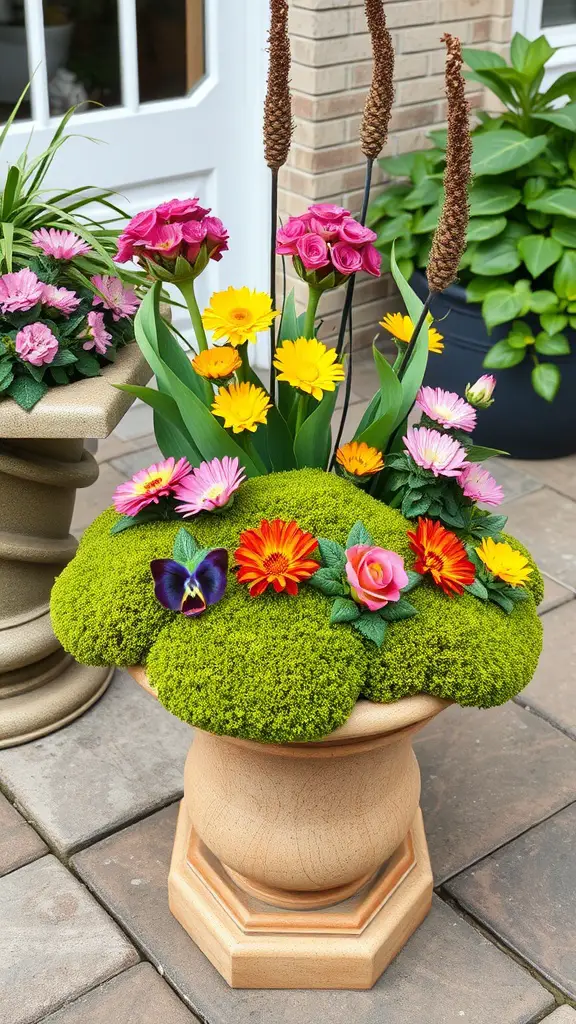
Container gardens are a fantastic way to showcase your creativity, and using moss can add a unique twist. The image shows a beautiful arrangement featuring vibrant flowers and lush moss. The bright colors of the flowers contrast nicely with the soft green of the moss, creating a visually appealing display.
Moss brings a soft texture to container gardens, making them feel more inviting. You can use it as a base layer for other plants or let it stand out on its own. The round, fluffy moss in the image acts like a cushion, supporting the colorful blossoms that peek out from its surface.
Combining moss with various flowers, like the pink and yellow blooms shown, adds depth and interest. You can choose flowers that complement the moss and create a lively garden in a pot. This combination can brighten up any space, whether on a patio or a balcony. Experiment with different flower shapes and colors to find your perfect mix!
Moss in Shaded Garden Areas
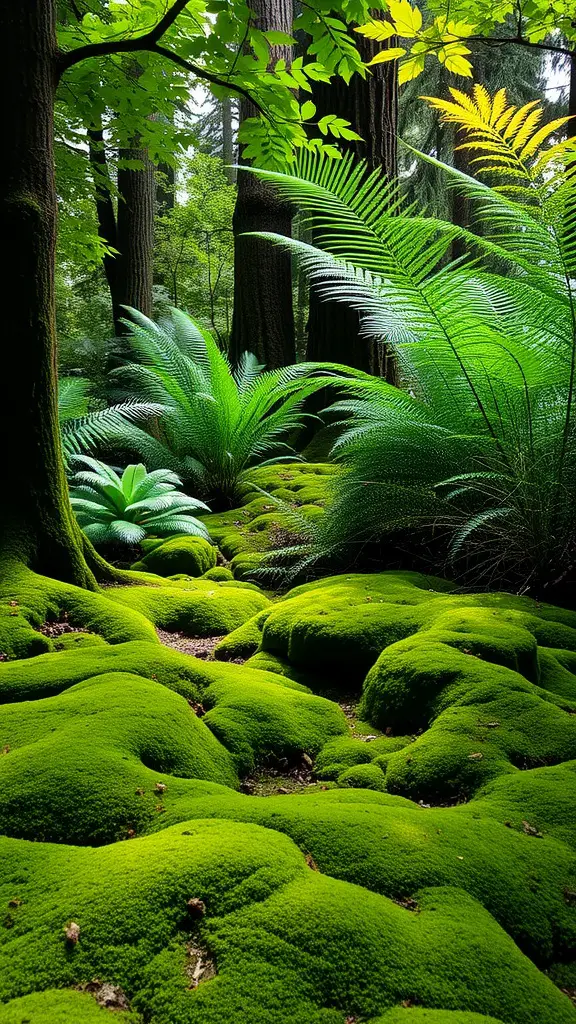
Moss thrives in shaded garden spots where sunlight is limited. The lush carpet of green moss creates a soft, inviting ground cover. It’s perfect for areas beneath trees or shaded by buildings. The vibrant green contrasts nicely with the dark bark of trees and the bright foliage around it.
In the image, we see a lovely mossy area with various plants and ferns adding texture and color. The layers of moss create a natural, undulating landscape that feels serene. This setting encourages a peaceful vibe, perfect for relaxation.
Using moss in these shaded areas not only beautifies the space but also helps with moisture retention in the soil. This means less watering for you! Plus, moss is low-maintenance and can outlast many traditional garden plants in these conditions.
Moss as a Ground Cover Solution
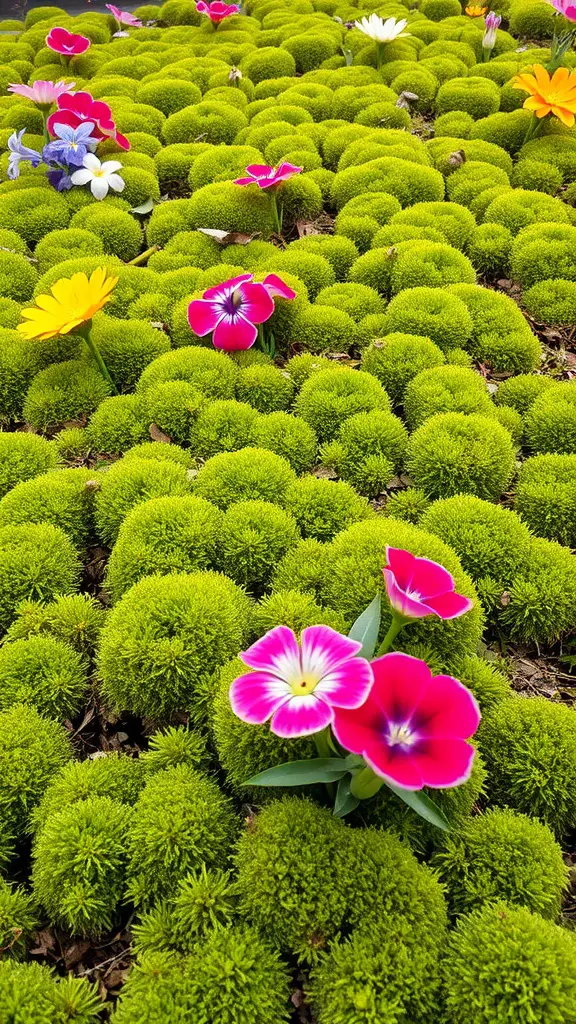
Moss is a fantastic choice for ground cover. It creates a lush, green carpet that feels soft underfoot. In the image, you can see a vibrant patch of moss dotted with colorful flowers. This combination adds charm and visual interest to any garden.
Moss thrives in shaded areas, making it perfect for spots where grass struggles. Its unique texture contrasts beautifully with the bright blooms, bringing life to shaded corners. Plus, moss requires less maintenance than traditional lawns, which is a big plus for busy gardeners.
Using moss as ground cover can help prevent soil erosion too. Its dense growth holds soil in place, making it a smart choice for sloped areas. It also retains moisture, benefiting nearby plants during dry spells. In short, moss not only looks good but is practical for various gardening challenges.
Incorporating Moss into Rock Gardens
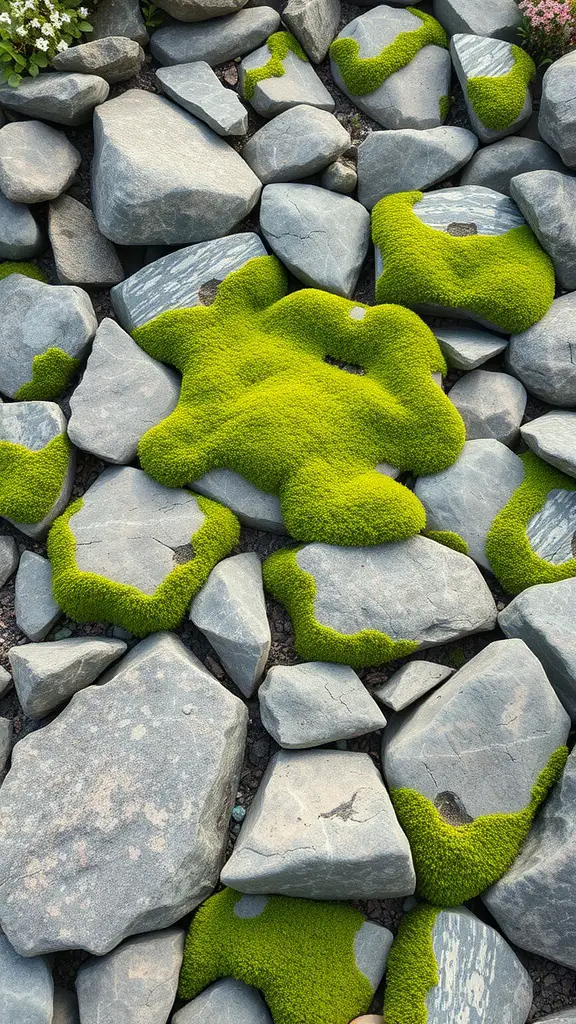
Moss brings a unique charm to rock gardens. Its vibrant green color contrasts beautifully with the gray tones of stones. The image illustrates how moss can spread across rocks, creating a natural, flowing look.
Using moss effectively can soften the harsh lines of stones. It fills gaps and adds texture, making the garden feel more lush and inviting. This combination encourages wildlife, like tiny insects and birds, to visit, adding life to the space.
For those new to gardening, pairing moss with various rock sizes can create visual interest. Be sure to choose a moss variety that fits your climate and the amount of sun or shade your garden receives.
Incorporating moss into your rock garden not only enhances its aesthetic appeal but also promotes a more sustainable ecosystem. It’s a simple way to add greenery and create a serene environment.
Moss and Water Features
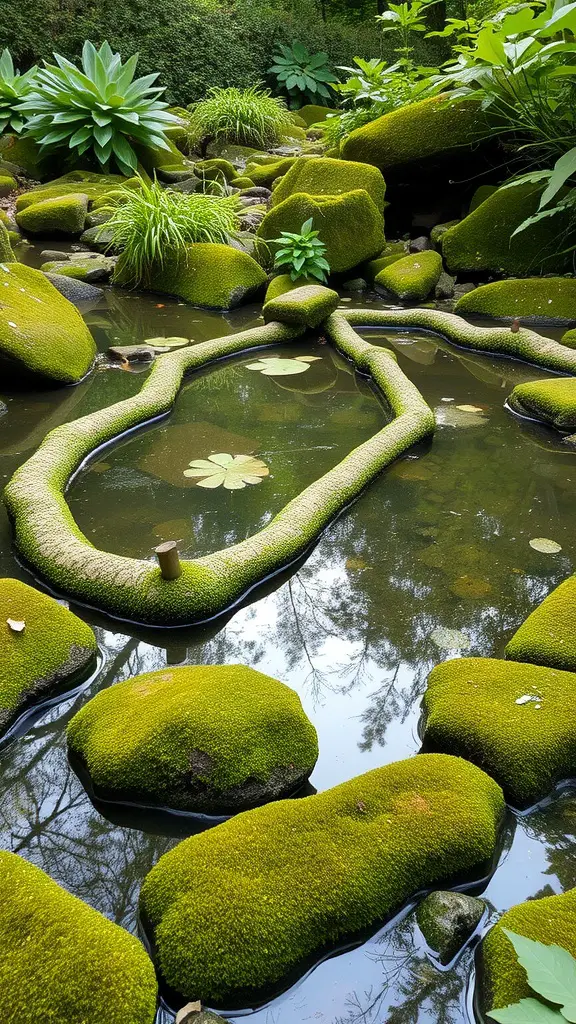
Moss gardens can transform any outdoor space into a serene retreat. When paired with water features, like ponds or streams, they create a unique harmony in nature.
The image showcases a tranquil scene where moss-covered rocks frame a serene pond. The lush green moss adds a soft touch to the hard landscape, making it inviting. The gentle curves of the mossy stones lead the eye along the water’s edge, creating a natural flow that draws you in.
Incorporating water features in your moss garden can enhance its beauty. Think about adding a small fountain or a pond filled with lily pads. The reflective quality of water complements the vibrant green of the moss, creating a peaceful atmosphere.
Consider using natural stones that blend seamlessly with the moss to give your garden a cohesive look. This combination of elements not only looks beautiful but also promotes a healthy ecosystem, attracting various wildlife.
Creating a Tranquil Moss Pathway
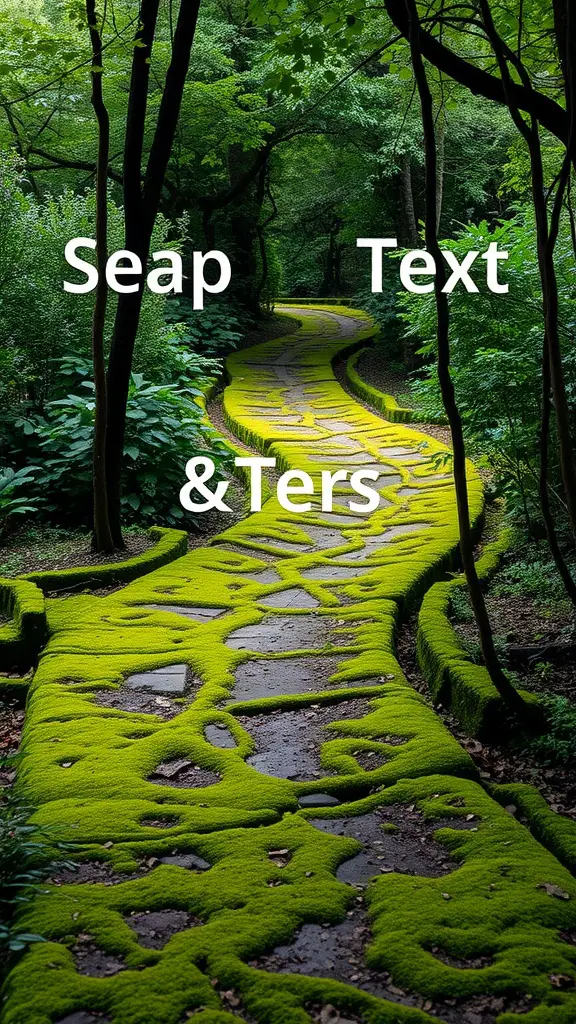
A moss pathway can transform any garden into a serene retreat. Imagine stepping onto a soft, green carpet of moss as you wander through your outdoor space. The vibrant green hue not only brightens up the area but also adds a calming touch.
This particular pathway, lined with moss and interspersed with stones, invites you to explore. Its winding nature creates a sense of curiosity, encouraging you to see what lies ahead. The lush foliage surrounding the path enhances the experience, making it feel like a hidden gem within your garden.
When designing your moss pathway, consider the overall layout. You can choose to have it meander around flower beds or lead to a cozy seating area. Adding stepping stones can provide a practical way to navigate while still showing off the beauty of the moss.
For maintenance, ensure the moss stays damp, especially in warmer months. A light misting can help keep it vibrant and healthy. With the right care, your moss pathway will be a delightful feature in your garden for years to come.
Building a Moss Wall
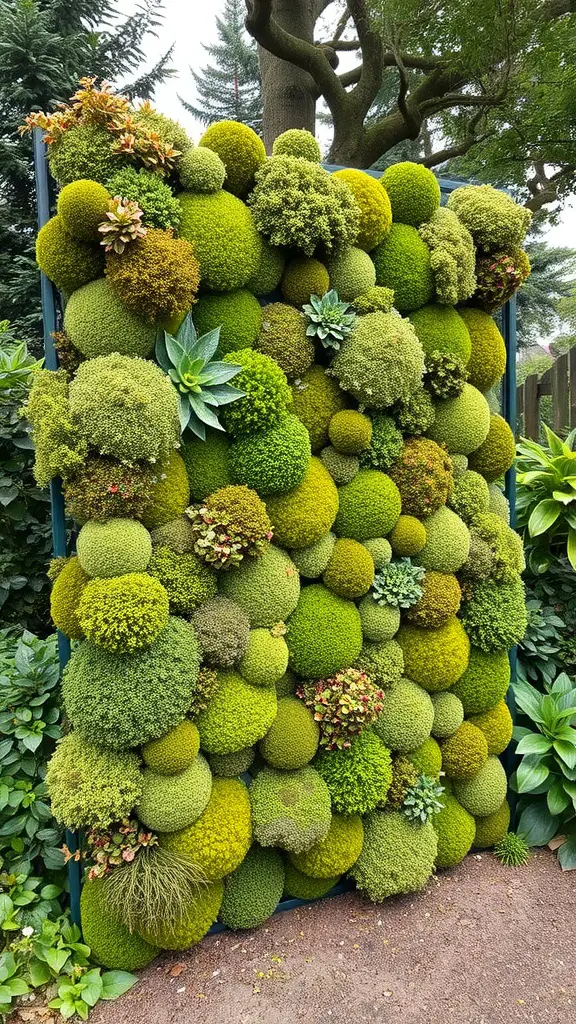
A moss wall is a striking way to bring nature indoors or to enhance your outdoor space. The image shows a beautiful moss wall made up of various shades and textures of moss and small plants. This vibrant green structure adds a unique touch to any garden or interior design.
Creating a moss wall is easier than it looks. Start by selecting a sturdy frame to hold the moss securely. You can use wood or even metal for this purpose. Next, gather your moss and plants. The variety in textures and colors will make your wall pop.
Once your frame is ready, begin attaching the moss. Use adhesive suitable for plants to keep everything in place. You can layer different types of moss and greenery to create depth and interest. Remember to leave enough space for air circulation and to avoid overcrowding.
Watering and maintenance are key. Ensure your moss receives enough moisture without being overly soggy. A light misting will usually do the trick. Over time, your moss wall will grow and thrive, becoming a lush focal point.
Moss in Japanese Zen Gardens
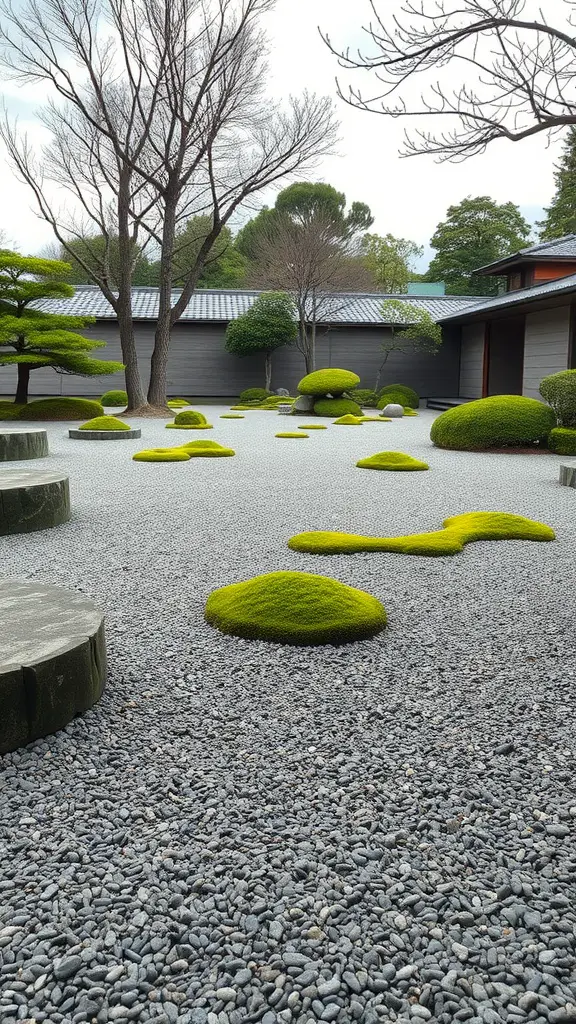
Moss plays a special role in Japanese Zen gardens, adding beauty and tranquility. In the image, we see various rounded mounds of vibrant green moss scattered across a gravel surface. This simple yet stunning layout captures the essence of Zen aesthetics.
The soft textures of the moss contrast with the smooth stones and gravel, creating a calming atmosphere. Each moss patch represents nature’s artistry, inviting visitors to pause and reflect. The clean lines and carefully arranged elements remind us of the importance of balance in design.
Zen gardens often aim to evoke feelings of peace. The moss here serves as a reminder of nature’s resilience and beauty. It thrives in shaded areas, perfectly suited for these serene spaces. Incorporating moss into your garden design can bring a touch of Zen to your outdoor retreat.
Moss as a Natural Mulch
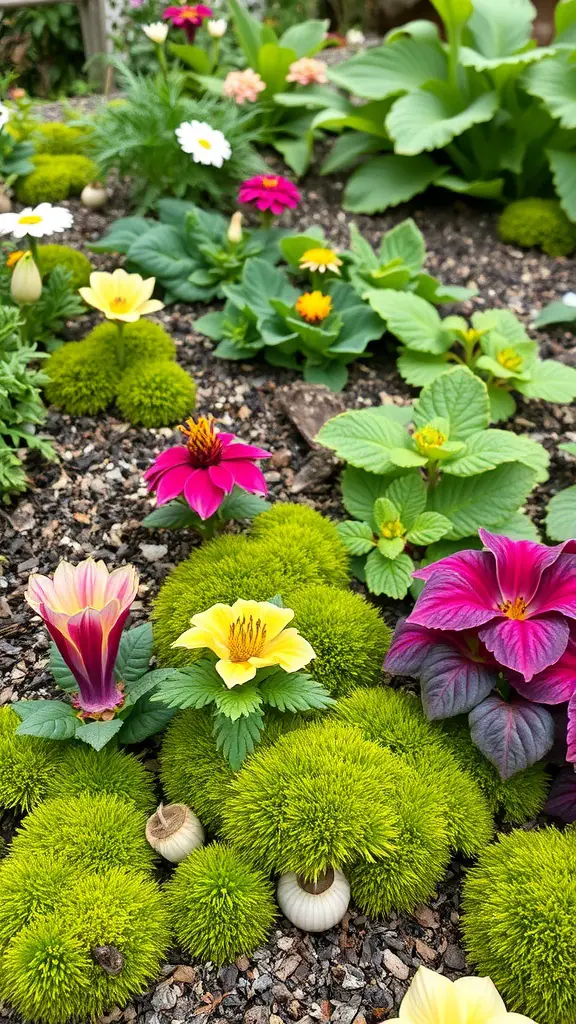
Moss can serve as a fantastic natural mulch, adding both beauty and functionality to your garden. In the image, vibrant flowers grace the landscape, while lush green moss creates a soft, inviting ground cover. This combination not only enhances the overall look but also provides several practical benefits.
Using moss as mulch helps retain moisture in the soil, which can be particularly helpful during hot, dry spells. It acts as a barrier, reducing evaporation and keeping your plants hydrated. Plus, it can suppress weeds, allowing your flowers to thrive without competition.
The texture of moss creates a lovely contrast with the flowers, elevating the garden’s aesthetic. As it naturally breaks down, it enriches the soil, contributing to a healthier garden ecosystem over time. Incorporating moss into your landscaping ideas can lead to a vibrant, low-maintenance space that showcases nature’s beauty.
Moss and Seasonal Decor
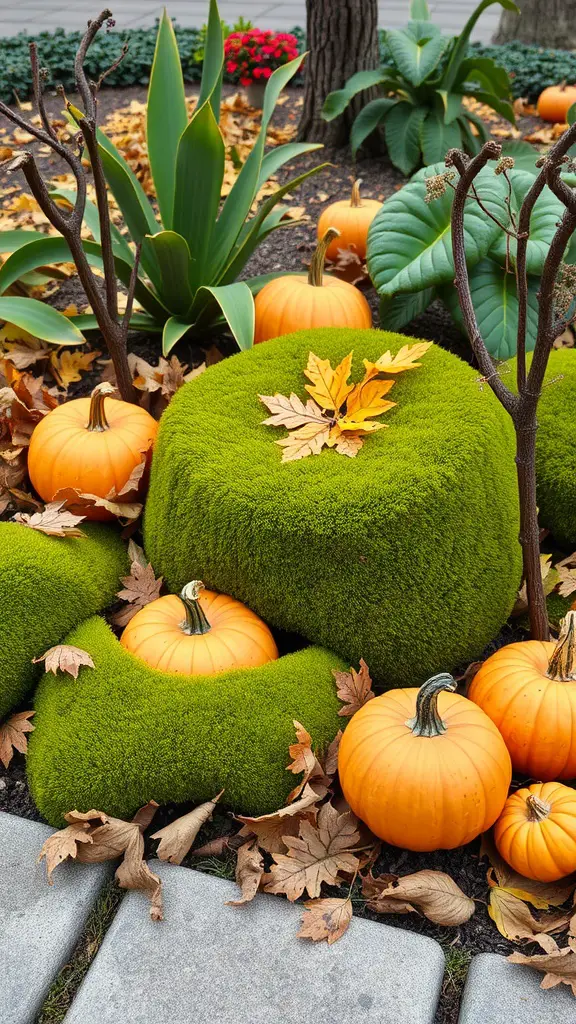
Moss can add a delightful touch to seasonal decorations, creating a cozy atmosphere. In the image, vibrant green moss forms soft, rounded shapes on the ground, complementing the bright orange pumpkins scattered around it. This combination is perfect for autumn, blending natural elements beautifully.
Mixing moss with seasonal decor, like pumpkins and fallen leaves, brings a touch of nature indoors. The round moss shapes act as an inviting backdrop for the pumpkins, enhancing their seasonal warmth. Adding leaves on top of the moss also creates a playful, layered look.
Using moss in your decor can be a simple way to elevate your garden or outdoor space. It pairs wonderfully with other fall elements, inviting a sense of calm and charm that’s perfect for gatherings or quiet moments.
Designing a Mossy Fairy Garden
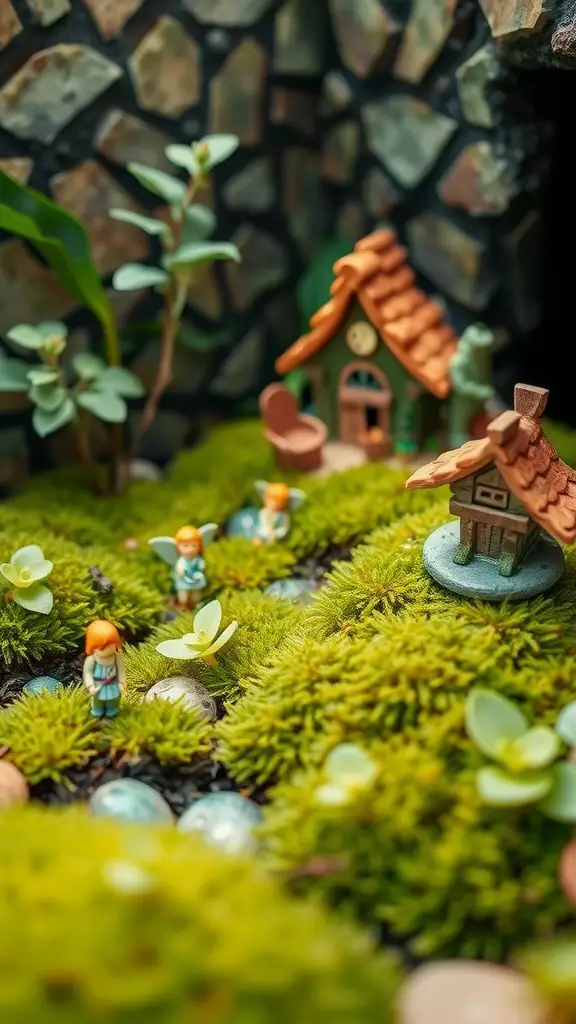
Creating a mossy fairy garden is a fun way to bring a touch of magic to your outdoor space. In the image, we see tiny figurines amidst lush green moss, resembling a tiny village. The vibrant colors of the moss and the charming houses draw the eye in, making it a perfect spot for imaginative play.
Start by choosing a container or a designated area in your garden. Moss thrives in shady spots, so look for a location that doesn’t get too much direct sunlight. You can create pathways using pebbles or small stones, just like in the picture. These details add depth to your garden and guide the eye across the landscape.
Next, incorporate miniature structures, like cute houses and furniture. These elements give your fairy garden character and invite onlookers to explore. The small figurines, such as the fairies seen in the image, add a playful touch. They can stand on the moss or near the whimsical structures, bringing life to your setup.
Finally, consider adding small plants or flowers that complement the moss. Soft greens and delicate blooms will enhance the natural beauty. With a little creativity, your mossy fairy garden can become a delightful retreat.
Moss for Indoor Greenery
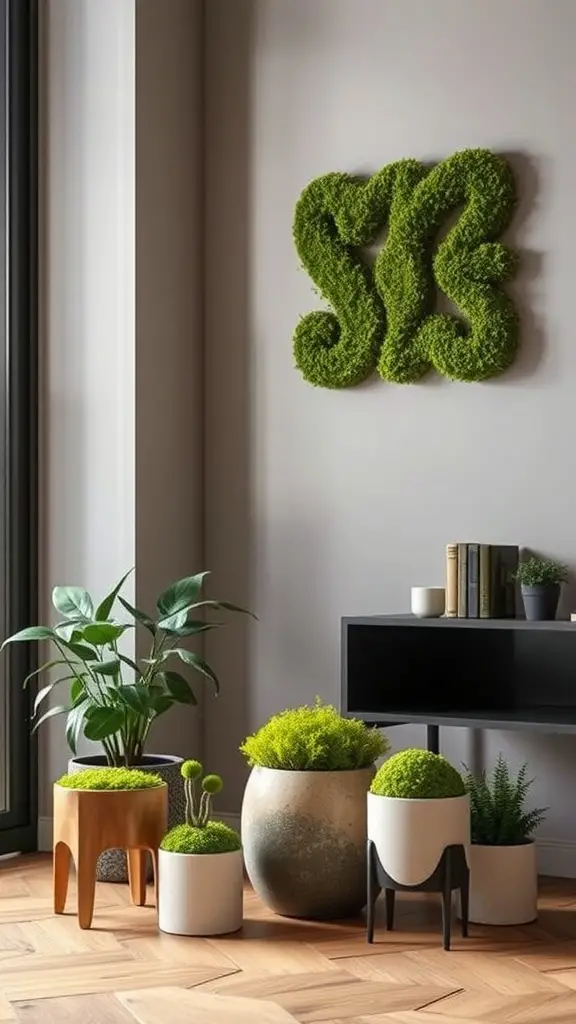
Incorporating moss into your indoor spaces can completely transform the look and feel of your home. The image showcases a stylish indoor setup featuring various moss arrangements. On the wall, a decorative moss art piece adds a unique touch, drawing the eye and sparking interest. The combination of different planters, shapes, and sizes creates a lively atmosphere.
Using moss as indoor greenery is not just about aesthetics; it also brings a sense of serenity to your environment. The soft texture and vibrant green color of the moss contrast beautifully with the sleek furniture and warm wooden floor. This mix of natural and modern elements invites a refreshing vibe into any room.
If you’re looking to bring some nature indoors, consider creating a moss garden in your living space. Pair it with other houseplants like ferns or snake plants for added variety. The result is a charming display that brightens up your home while improving air quality.
Creating Moss Terrariums
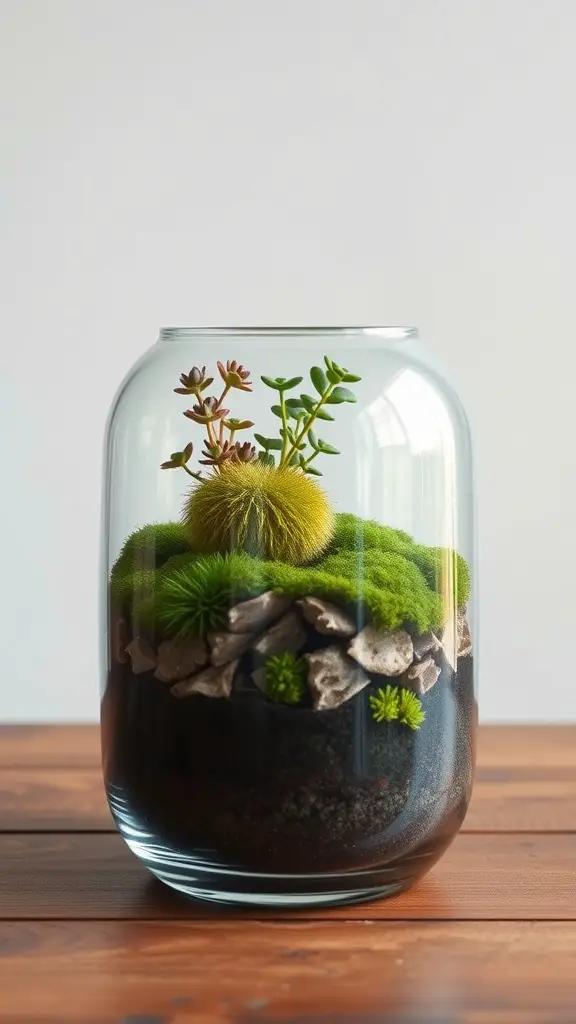
Moss terrariums are a fun and creative way to bring a little bit of nature indoors. They are like tiny ecosystems that can brighten up any space. In the image above, you can see a lovely glass terrarium filled with vibrant moss and a few small plants. The clear glass allows you to admire the beautiful layers and textures inside.
To create your own moss terrarium, start with a glass container. Choose one that suits your style, whether it’s a jar, bowl, or a vase. Then, layer the bottom with small rocks for drainage. This helps to prevent water from sitting at the bottom, which can damage your plants.
Next, add a layer of activated charcoal to keep the air fresh. After that, it’s time for the soil. Use a good quality potting mix suitable for the plants you plan to use. Lastly, arrange your moss and plants in the terrarium, creating small hills or valleys for visual interest. You can even include stones or decorative elements for extra flair.
After assembling your terrarium, place it in a spot with indirect sunlight. Moss thrives in a bit of shade, so avoid direct light that can dry it out. Water it lightly and let it grow! Over time, you’ll enjoy watching your little green world flourish.
Moss in Woodland Gardens
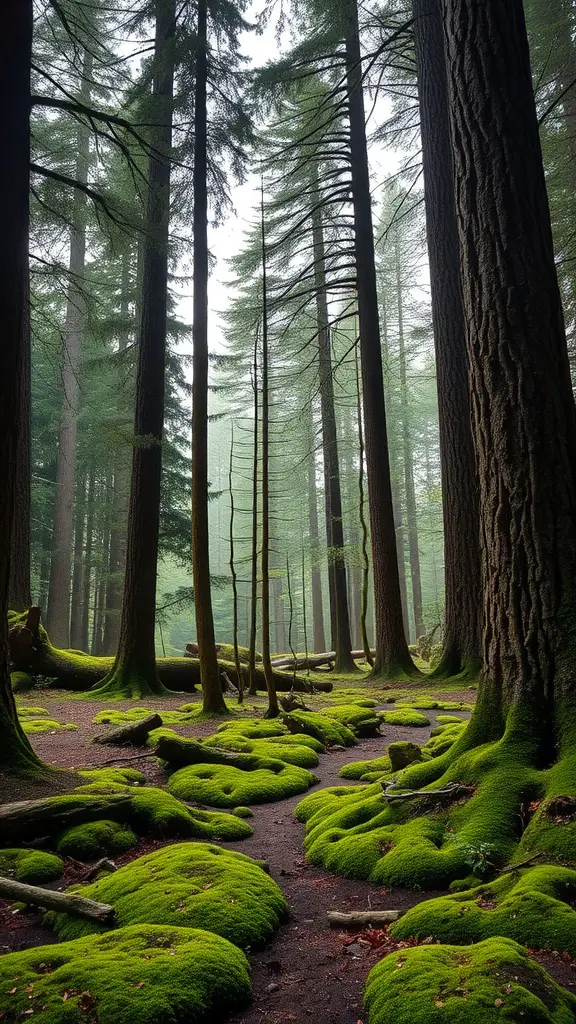
Woodland gardens create a peaceful retreat, and adding moss enhances this serenity. The lush green moss carpets the forest floor, creating a soft, inviting texture underfoot.
In the image, tall trees rise majestically, their trunks covered in rich textures. The moss thrives in the shade, highlighting the beauty of the natural landscape. This combination of moss and towering trees offers a tranquil environment, perfect for a quiet stroll or meditation.
Integrating moss into your woodland garden can help with moisture retention and soil health. It’s a great way to fill in spaces between rocks or tree roots, giving the garden a cohesive look. Consider placing moss around shaded areas or under trees to bring life to those darker spots.
By choosing different varieties of moss, you can add a unique touch to your garden. Whether you prefer a vibrant green or a softer hue, there’s a type that will suit your woodland theme perfectly. Embrace the beauty of nature and let moss play a starring role in your garden!



